Sheng Yang
State Key Laboratory of Information Engineering in Survering, Mapping and Remote Sensing, Wuhan University
ZFusion: An Effective Fuser of Camera and 4D Radar for 3D Object Perception in Autonomous Driving
Apr 07, 2025Abstract:Reliable 3D object perception is essential in autonomous driving. Owing to its sensing capabilities in all weather conditions, 4D radar has recently received much attention. However, compared to LiDAR, 4D radar provides much sparser point cloud. In this paper, we propose a 3D object detection method, termed ZFusion, which fuses 4D radar and vision modality. As the core of ZFusion, our proposed FP-DDCA (Feature Pyramid-Double Deformable Cross Attention) fuser complements the (sparse) radar information and (dense) vision information, effectively. Specifically, with a feature-pyramid structure, the FP-DDCA fuser packs Transformer blocks to interactively fuse multi-modal features at different scales, thus enhancing perception accuracy. In addition, we utilize the Depth-Context-Split view transformation module due to the physical properties of 4D radar. Considering that 4D radar has a much lower cost than LiDAR, ZFusion is an attractive alternative to LiDAR-based methods. In typical traffic scenarios like the VoD (View-of-Delft) dataset, experiments show that with reasonable inference speed, ZFusion achieved the state-of-the-art mAP (mean average precision) in the region of interest, while having competitive mAP in the entire area compared to the baseline methods, which demonstrates performance close to LiDAR and greatly outperforms those camera-only methods.
Industrial-Grade Sensor Simulation via Gaussian Splatting: A Modular Framework for Scalable Editing and Full-Stack Validation
Mar 14, 2025Abstract:Sensor simulation is pivotal for scalable validation of autonomous driving systems, yet existing Neural Radiance Fields (NeRF) based methods face applicability and efficiency challenges in industrial workflows. This paper introduces a Gaussian Splatting (GS) based system to address these challenges: We first break down sensor simulator components and analyze the possible advantages of GS over NeRF. Then in practice, we refactor three crucial components through GS, to leverage its explicit scene representation and real-time rendering: (1) choosing the 2D neural Gaussian representation for physics-compliant scene and sensor modeling, (2) proposing a scene editing pipeline to leverage Gaussian primitives library for data augmentation, and (3) coupling a controllable diffusion model for scene expansion and harmonization. We implement this framework on a proprietary autonomous driving dataset supporting cameras and LiDAR sensors. We demonstrate through ablation studies that our approach reduces frame-wise simulation latency, achieves better geometric and photometric consistency, and enables interpretable explicit scene editing and expansion. Furthermore, we showcase how integrating such a GS-based sensor simulator with traffic and dynamic simulators enables full-stack testing of end-to-end autonomy algorithms. Our work provides both algorithmic insights and practical validation, establishing GS as a cornerstone for industrial-grade sensor simulation.
Para-Lane: Multi-Lane Dataset Registering Parallel Scans for Benchmarking Novel View Synthesis
Feb 21, 2025Abstract:To evaluate end-to-end autonomous driving systems, a simulation environment based on Novel View Synthesis (NVS) techniques is essential, which synthesizes photo-realistic images and point clouds from previously recorded sequences under new vehicle poses, particularly in cross-lane scenarios. Therefore, the development of a multi-lane dataset and benchmark is necessary. While recent synthetic scene-based NVS datasets have been prepared for cross-lane benchmarking, they still lack the realism of captured images and point clouds. To further assess the performance of existing methods based on NeRF and 3DGS, we present the first multi-lane dataset registering parallel scans specifically for novel driving view synthesis dataset derived from real-world scans, comprising 25 groups of associated sequences, including 16,000 front-view images, 64,000 surround-view images, and 16,000 LiDAR frames. All frames are labeled to differentiate moving objects from static elements. Using this dataset, we evaluate the performance of existing approaches in various testing scenarios at different lanes and distances. Additionally, our method provides the solution for solving and assessing the quality of multi-sensor poses for multi-modal data alignment for curating such a dataset in real-world. We plan to continually add new sequences to test the generalization of existing methods across different scenarios. The dataset is released publicly at the project page: https://nizqleo.github.io/paralane-dataset/.
Language Driven Occupancy Prediction
Nov 25, 2024



Abstract:We introduce LOcc, an effective and generalizable framework for open-vocabulary occupancy (OVO) prediction. Previous approaches typically supervise the networks through coarse voxel-to-text correspondences via image features as intermediates or noisy and sparse correspondences from voxel-based model-view projections. To alleviate the inaccurate supervision, we propose a semantic transitive labeling pipeline to generate dense and finegrained 3D language occupancy ground truth. Our pipeline presents a feasible way to dig into the valuable semantic information of images, transferring text labels from images to LiDAR point clouds and utimately to voxels, to establish precise voxel-to-text correspondences. By replacing the original prediction head of supervised occupancy models with a geometry head for binary occupancy states and a language head for language features, LOcc effectively uses the generated language ground truth to guide the learning of 3D language volume. Through extensive experiments, we demonstrate that our semantic transitive labeling pipeline can produce more accurate pseudo-labeled ground truth, diminishing labor-intensive human annotations. Additionally, we validate LOcc across various architectures, where all models consistently outperform state-ofthe-art zero-shot occupancy prediction approaches on the Occ3D-nuScenes dataset. Notably, even based on the simpler BEVDet model, with an input resolution of 256 * 704,Occ-BEVDet achieves an mIoU of 20.29, surpassing previous approaches that rely on temporal images, higher-resolution inputs, or larger backbone networks. The code for the proposed method is available at https://github.com/pkqbajng/LOcc.
StraGo: Harnessing Strategic Guidance for Prompt Optimization
Oct 11, 2024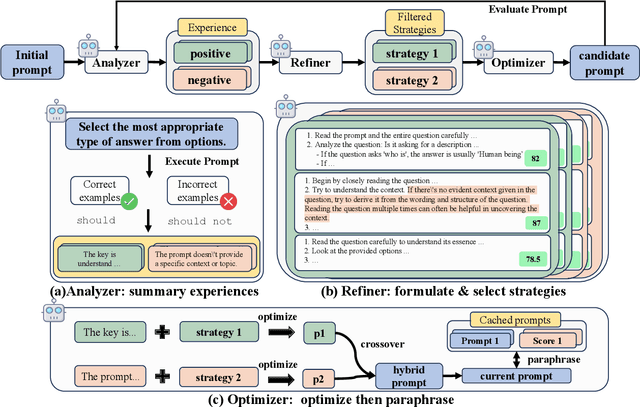
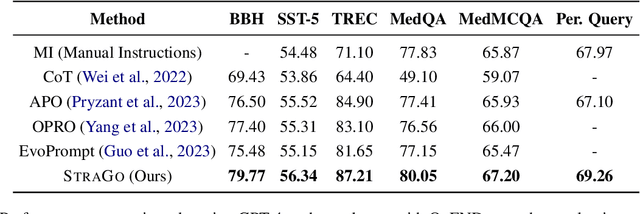

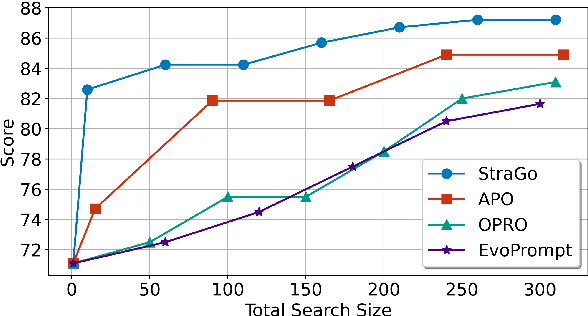
Abstract:Prompt engineering is pivotal for harnessing the capabilities of large language models (LLMs) across diverse applications. While existing prompt optimization methods improve prompt effectiveness, they often lead to prompt drifting, where newly generated prompts can adversely impact previously successful cases while addressing failures. Furthermore, these methods tend to rely heavily on LLMs' intrinsic capabilities for prompt optimization tasks. In this paper, we introduce StraGo (Strategic-Guided Optimization), a novel approach designed to mitigate prompt drifting by leveraging insights from both successful and failed cases to identify critical factors for achieving optimization objectives. StraGo employs a how-to-do methodology, integrating in-context learning to formulate specific, actionable strategies that provide detailed, step-by-step guidance for prompt optimization. Extensive experiments conducted across a range of tasks, including reasoning, natural language understanding, domain-specific knowledge, and industrial applications, demonstrate StraGo's superior performance. It establishes a new state-of-the-art in prompt optimization, showcasing its ability to deliver stable and effective prompt improvements.
AMPO: Automatic Multi-Branched Prompt Optimization
Oct 11, 2024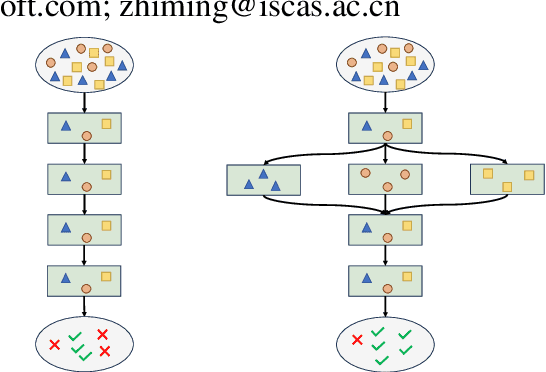
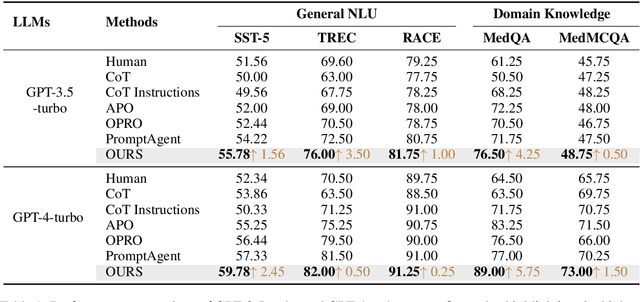
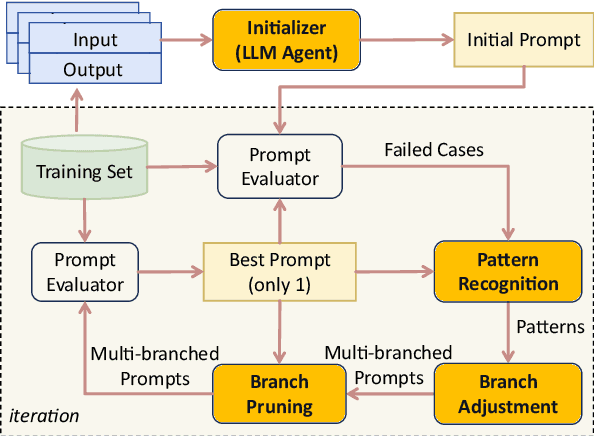
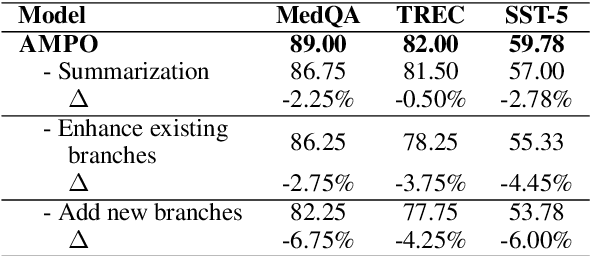
Abstract:Prompt engineering is very important to enhance the performance of large language models (LLMs). When dealing with complex issues, prompt engineers tend to distill multiple patterns from examples and inject relevant solutions to optimize the prompts, achieving satisfying results. However, existing automatic prompt optimization techniques are only limited to producing single flow instructions, struggling with handling diverse patterns. In this paper, we present AMPO, an automatic prompt optimization method that can iteratively develop a multi-branched prompt using failure cases as feedback. Our goal is to explore a novel way of structuring prompts with multi-branches to better handle multiple patterns in complex tasks, for which we introduce three modules: Pattern Recognition, Branch Adjustment, and Branch Pruning. In experiments across five tasks, AMPO consistently achieves the best results. Additionally, our approach demonstrates significant optimization efficiency due to our adoption of a minimal search strategy.
LiDAR-GS:Real-time LiDAR Re-Simulation using Gaussian Splatting
Oct 07, 2024Abstract:LiDAR simulation plays a crucial role in closed-loop simulation for autonomous driving. Although recent advancements, such as the use of reconstructed mesh and Neural Radiance Fields (NeRF), have made progress in simulating the physical properties of LiDAR, these methods have struggled to achieve satisfactory frame rates and rendering quality. To address these limitations, we present LiDAR-GS, the first LiDAR Gaussian Splatting method, for real-time high-fidelity re-simulation of LiDAR sensor scans in public urban road scenes. The vanilla Gaussian Splatting, designed for camera models, cannot be directly applied to LiDAR re-simulation. To bridge the gap between passive camera and active LiDAR, our LiDAR-GS designs a differentiable laser beam splatting, grounded in the LiDAR range view model. This innovation allows for precise surface splatting by projecting lasers onto micro cross-sections, effectively eliminating artifacts associated with local affine approximations. Additionally, LiDAR-GS leverages Neural Gaussian Fields, which further integrate view-dependent clues, to represent key LiDAR properties that are influenced by the incident angle and external factors. Combining these practices with some essential adaptations, e.g., dynamic instances decomposition, our approach succeeds in simultaneously re-simulating depth, intensity, and ray-drop channels, achieving state-of-the-art results in both rendering frame rate and quality on publically available large scene datasets. Our source code will be made publicly available.
MBDS: A Multi-Body Dynamics Simulation Dataset for Graph Networks Simulators
Oct 04, 2024Abstract:Modeling the structure and events of the physical world constitutes a fundamental objective of neural networks. Among the diverse approaches, Graph Network Simulators (GNS) have emerged as the leading method for modeling physical phenomena, owing to their low computational cost and high accuracy. The datasets employed for training and evaluating physical simulation techniques are typically generated by researchers themselves, often resulting in limited data volume and quality. Consequently, this poses challenges in accurately assessing the performance of these methods. In response to this, we have constructed a high-quality physical simulation dataset encompassing 1D, 2D, and 3D scenes, along with more trajectories and time-steps compared to existing datasets. Furthermore, our work distinguishes itself by developing eight complete scenes, significantly enhancing the dataset's comprehensiveness. A key feature of our dataset is the inclusion of precise multi-body dynamics, facilitating a more realistic simulation of the physical world. Utilizing our high-quality dataset, we conducted a systematic evaluation of various existing GNS methods. Our dataset is accessible for download at https://github.com/Sherlocktein/MBDS, offering a valuable resource for researchers to enhance the training and evaluation of their methodologies.
Evaluating S-Band Interference: Impact of Satellite Systems on Terrestrial Networks
Aug 21, 2024Abstract:The co-existence of terrestrial and non-terrestrial networks (NTNs) is essential for achieving global coverage in sixth-generation cellular networks. Due to increasing spectrum demand, there is discussion in the world level to share some frequencies used in terrestrial Networks (TNs) with NTNs, resulting in co-channel interference and performance degradation. This paper analyzes the interference caused by satellite networks on TN in the S-band. We examined the transmission mechanisms of satellite signals and conducted simulations to evaluate interference intensity across varying slant ranges. Our findings indicate that the angle between the user equipment direction and the sub-satellite point direction from the beam center significantly impacts the interference level.
WING: Wheel-Inertial Neural Odometry with Ground Manifold Constraints
Jul 14, 2024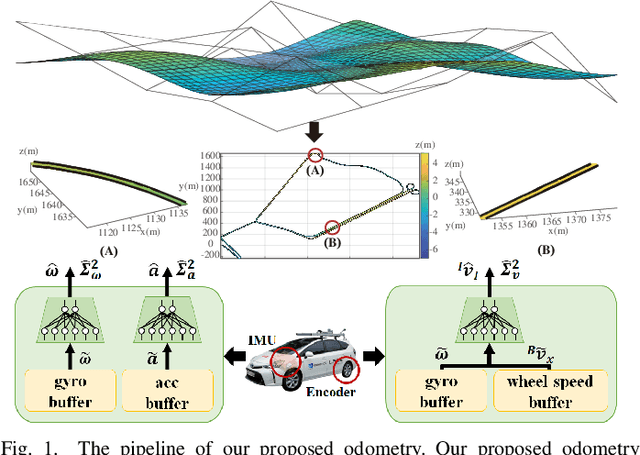
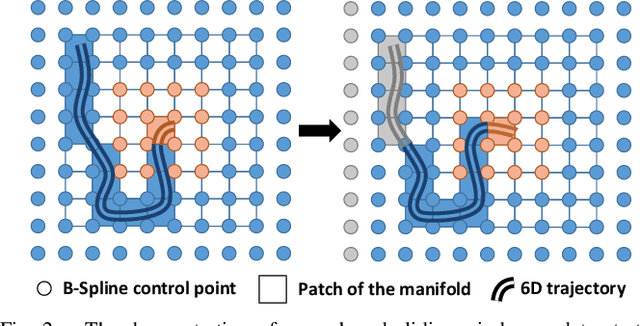
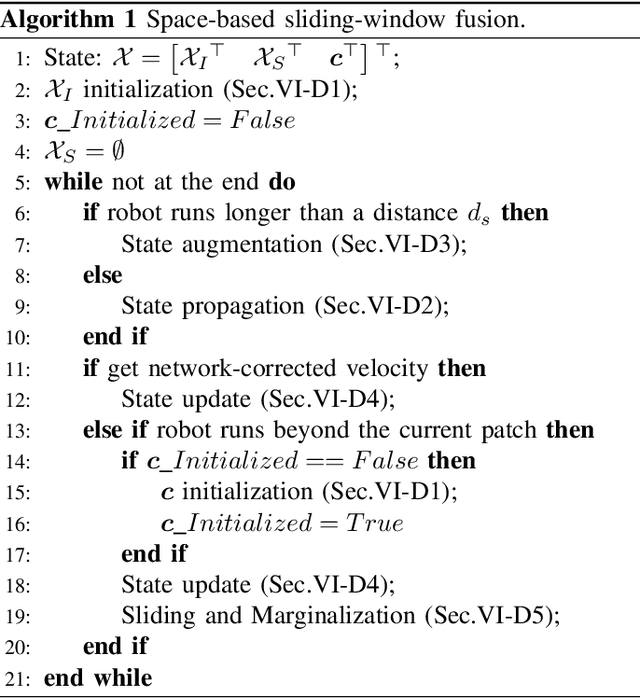

Abstract:In this paper, we propose an interoceptive-only odometry system for ground robots with neural network processing and soft constraints based on the assumption of a globally continuous ground manifold. Exteroceptive sensors such as cameras, GPS and LiDAR may encounter difficulties in scenarios with poor illumination, indoor environments, dusty areas and straight tunnels. Therefore, improving the pose estimation accuracy only using interoceptive sensors is important to enhance the reliability of navigation system even in degrading scenarios mentioned above. However, interoceptive sensors like IMU and wheel encoders suffer from large drift due to noisy measurements. To overcome these challenges, the proposed system trains deep neural networks to correct the measurements from IMU and wheel encoders, while considering their uncertainty. Moreover, because ground robots can only travel on the ground, we model the ground surface as a globally continuous manifold using a dual cubic B-spline manifold to further improve the estimation accuracy by this soft constraint. A novel space-based sliding-window filtering framework is proposed to fully exploit the $C^2$ continuity of ground manifold soft constraints and fuse all the information from raw measurements and neural networks in a yaw-independent attitude convention. Extensive experiments demonstrate that our proposed approach can outperform state-of-the-art learning-based interoceptive-only odometry methods.
 Add to Chrome
Add to Chrome Add to Firefox
Add to Firefox Add to Edge
Add to Edge